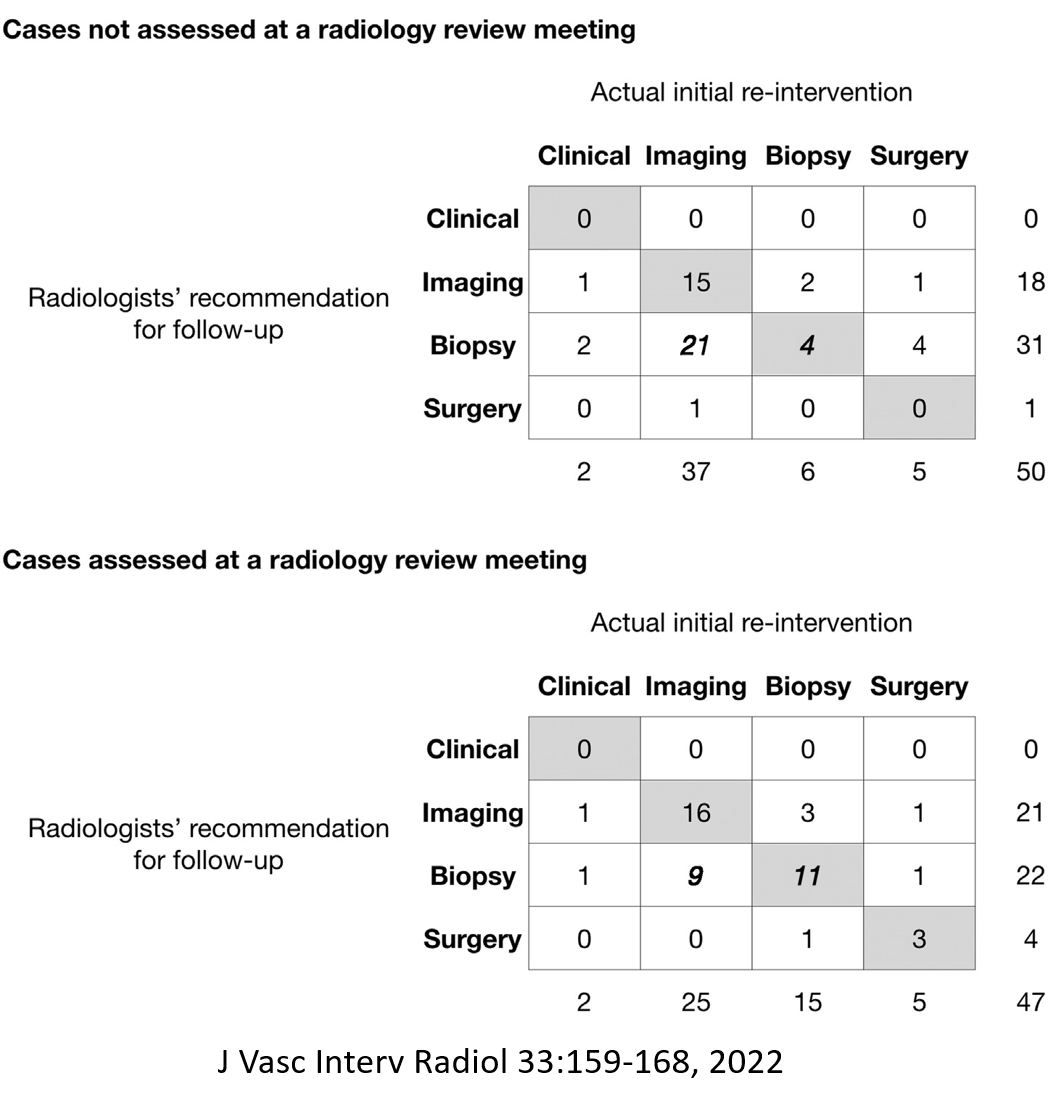Image-guided biopsies are done in the context of imaging findings that are suggestive of malignancy. Biopsies are utilized for definitive diagnosis and characterization of the tumor pathology. However, in some of these cases, the pathology report is returned as benign or nondiagnostic. We investigated whether a radiology review of these “discordant” cases could improve care. To learn more, read the published journal article here.
We retrospectively reviewed discordant cases that were not assessed at a radiology review meeting and compared those with cases that had been reviewed.
Of the 926 cases reviewed, 11% (104 cases) were discordant, and 57% of those (59 cases) proved to be malignant.

In addition, the study demonstrated that when radiologists consider the pathology report in the context of the original image-guided biopsy and recommend repeat biopsy, more biopsies were performed (see data at the bottom of the page).
The repeat biopsies and surgery also resulted in a shorter time to definitive diagnosis compared with repeat imaging.
The finding of 57% of discordant cases being malignant motivates increased attention to these cases to better catch malignancies as early as possible, potentially through improved rate and timeliness of appropriate repeat biopsy. These protocols are currently being investigated in specific cancer settings to determine the efficacy of shifting towards radiologist-led radiology-pathology concordance in each, expanding the role of the radiologist in this setting.
